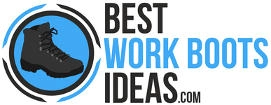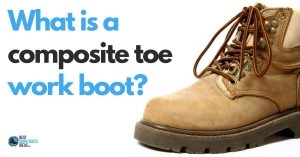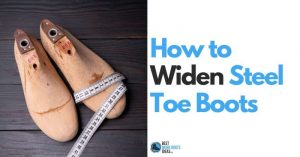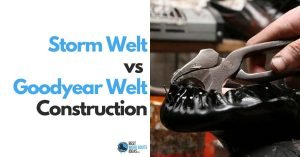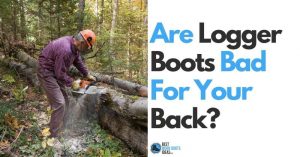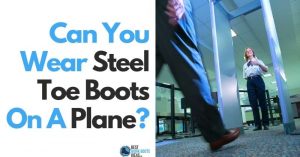What is Bondwelt Construction? Uncovering the Many Different Methods of Shoe and Boot Production
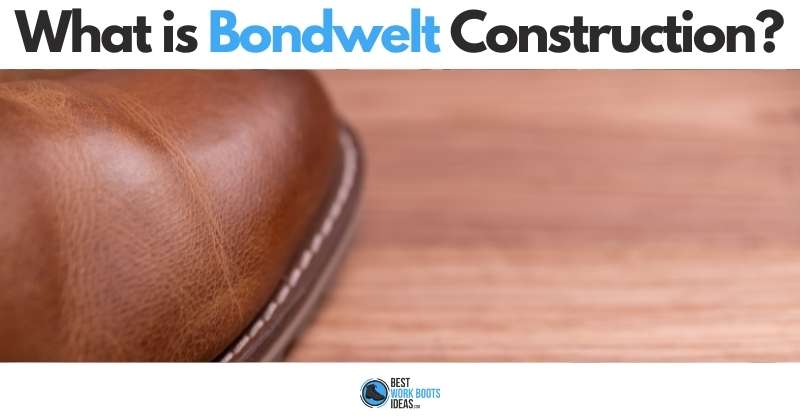
Bondwelt construction is a little known shoe construction style that combines the look of a Goodyear welt with some, but not all, of its functions.
This method is often used in dress shoes and casual boots that want to keep a particular look at a price point acceptable to consumers.
Today I’m going to look into this construction style and let you know who, when, and why bondwelt boots are desirable.
Contents
Read This First!
Before you get into this article, please make sure you know what welts, Blake Welt Stitch, Goodyear Welted, cemented shoe and storm welt all mean.
If those terms sound like they’re in a different language, check out the article I wrote on those topics to understand the various shoe construction methods.
That will bring you up to speed, and help you understand what you’re reading.
Especially when it comes to particular stitching.
What is a Bondwelt Shoe?
A bondwelt shoe is a style of footwear made using a mixture of cement and Goodyear Welted methods. The leather welt is stitched to the upper, but the seam between the welt and outsole is secured by cement, not stitches.
This is called a bondwelt, but you might also hear it referred to as a “faux-welt” or “fake welt.”
While you’ll see stitches, they’re either imprinted or are real, but superfluous.
Seeing is not believing in this case, as the stitches are only aesthetic features, not functional.
What are the Features of Bondwelt Shoes?
The primary feature of bondwelt footwear is that it is cheaper than more complex construction methods.
While many styles and materials flaunt their performance features first, with bond welted shoes, the primary thought was for cost savings.
That’s not to say that there aren’t any features Bondwelt shoes are more flexible and comfortable than their Goodyear counterparts.
Because they are not fixed to one another, the outsole and uppers are able to move more naturally with their users’ step and stride.
Are Bond Welt and Goodyear Welt the Same Thing?
No. Goodyear welt is a much more thorough and sturdy construction method than Bond welt.
The primary feature these two styles have in common is their appearance, but their performance, longevity, and suggested uses are drastically different.
Goodyear welts are affixed to the boot’s upper, and through the mid and outsole.
There are countable stitches that firmly join these three parts of a work boot together as one unit.
While bond welts are also stitched to the boot’s upper, they are not actually stitched to the mid and outsole.
Depending on the design of the boot, bond welted boots attach the welt to either the mid or outsole using the same cements found in cement construction boots.
Is Bond Welt Construction the Same as Cement to Welt Construction?
No! These two styles are different. Cement to welt construction boots have a cemented outsole up until the heel, at which point the uppers are affixed to the outsole with a welt.
The purpose of this style is to save on construction costs and to deliver greater flexibility than a Goodyear welt.
Cement to welt construction styles are becoming more popular as flexibility and comfort are expected of work boots more and more often.
What is Bond Welt Footwear Used For?
Bond welt footwear is often used by dress and casual shoe manufacturers to imitate nicer shoes.
To the casual observer it appears they are high-quality dress shoes, although on closer observation the faux-stitches or imprints can be easily noticed.
Anyone experienced in the fashion or design world won’t be fooled though, so don’t try to pull the wool over on anyone with real style credentials.
The durability of these style shoes is fine, when used as intended.
If you’re simply looking for a reasonably priced, reasonably nice, pair of dress shoes for anything but working construction, have at it; these will get that job done.
Are Bond Welt Boots Good for Construction Work?
No. Bond welt boots are not durable enough to withstand the dirt and water most seen while working construction.
For a foreman, or someone that spends their day in the construction trailer, they should be fine, but not for anyone that does physically demanding work.
The issue with using bond welted footwear on the job is the cement.
While there are many cemented work boots, those boots are designed with the idea that they will be used in the mud.
With that in mind, those boots have edges, lips, and special seals all working to prevent water from breaking through.
Bond welted boots, on the other hand, are using the Goodyear welt style without all its design aspects.
This results in a situation where the style can’t deliver all the features and performance that it is known for, because it’s not what it looks like!
Style vs Design
Let me explain the difference between those two, because it can get confusing.
Despite our interchangeable use of the two words, “style” and “design” mean different things.
The style of a shoe is what we see, and can be misleading to understanding what it’s capable of doing.
The design of a shoe gets into its actual performance capabilities, and doesn’t depend on how things look.
Still confused? Let me give you a solid example.
Many boots are designed with puncture-resistant soles or a steel shank.
You can’t see these features, and their presence doesn’t change the look of the boot, so I can only say that they’re designed with these features.
There are times where design does affect style, and here’s an example.
Composite toe caps can be made of slender materials like Kevlar or carbon fiber, but much more often, they’re TPU toe caps that are neither slender nor subtle.
What happens is the exterior of the boot must bulge out at the toe box.
Some manufacturers even add something that looks like the bumper of a pickup truck to the boot.
Even though we can’t see the actual toe cap (the design), we see the effects of its presence when we look at the boot (the style).
Are Bondwelt Boots OSHA Approved?
Bond welt boots, in theory, could be OSHA approved if they had an ASTM f2413 rated toe cap.
That said, I couldn’t find any examples of bond welted boots available on the market currently.
Given the issues with using bond welt boots in moisture and mud, I don’t expect to see any bond welt work boots any time in the near future.
Word is Bond
This is one of those topics that might not matter right now, but will probably come into your head next time you’re grabbing a new pair of shoes to match a suit.
You’re gonna look at the shoe, remember reading this, and instantly know the proper questions to ask the salesperson.
I hope you remember this sentence in that moment, months or years from now.
